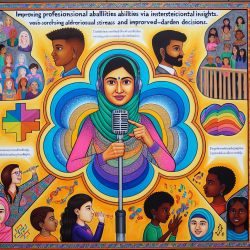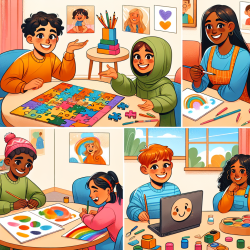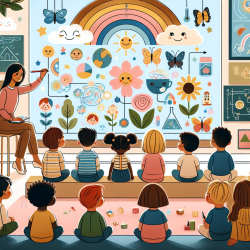Understanding Intersectional Identity in Speech Language Pathology
As practitioners in speech language pathology, we are constantly seeking ways to improve our approaches and outcomes for children. The recent study titled Measuring Gender Role Conflict, Internalized Stigma, and Racial and Sexual Identity in Behaviorally Bisexual Black Men offers valuable insights that can be adapted to our field, particularly in understanding the complex identities that children may navigate.
Key Findings and Their Implications
The study highlights the importance of considering multiple intersecting identities, such as race, gender, and sexual orientation, which are often overlooked in traditional research methodologies. For children, these intersecting identities can influence their communication styles and how they engage with therapy. The research introduces modified scales like the M-GRCS and IBHS, which are tailored to capture the nuanced experiences of behaviorally bisexual Black men, emphasizing the need for culturally relevant tools.
Applying Research Insights to Practice
Incorporating the concept of intersectionality into speech language pathology can enhance our understanding of the diverse backgrounds of the children we work with. Here are some strategies to consider:
- Adopt Culturally Relevant Tools: Just as the study modified existing scales to better suit the target population, practitioners should strive to use or develop assessment tools that reflect the cultural and social realities of the children they serve.
- Focus on Intersectional Identities: Recognize that children may have multiple intersecting identities that affect their communication and learning. Tailor interventions to address these unique aspects.
- Encourage Open Dialogue: Create a safe space for children to express their identities and experiences. This openness can foster better engagement and outcomes in therapy.
Encouraging Further Research
While the study provides a robust framework for understanding intersectional identities, further research is necessary to explore these concepts within the context of speech language pathology. Practitioners are encouraged to contribute to this growing body of knowledge by conducting studies that investigate the impact of intersectionality on communication disorders and therapy outcomes.
Conclusion
By integrating the findings from this research into our practice, we can better support the diverse needs of children in speech language pathology. Embracing intersectionality not only enriches our understanding but also enhances our ability to create inclusive and effective therapeutic environments.
To read the original research paper, please follow this link: Measuring Gender Role Conflict, Internalized Stigma, and Racial and Sexual Identity in Behaviorally Bisexual Black Men.










